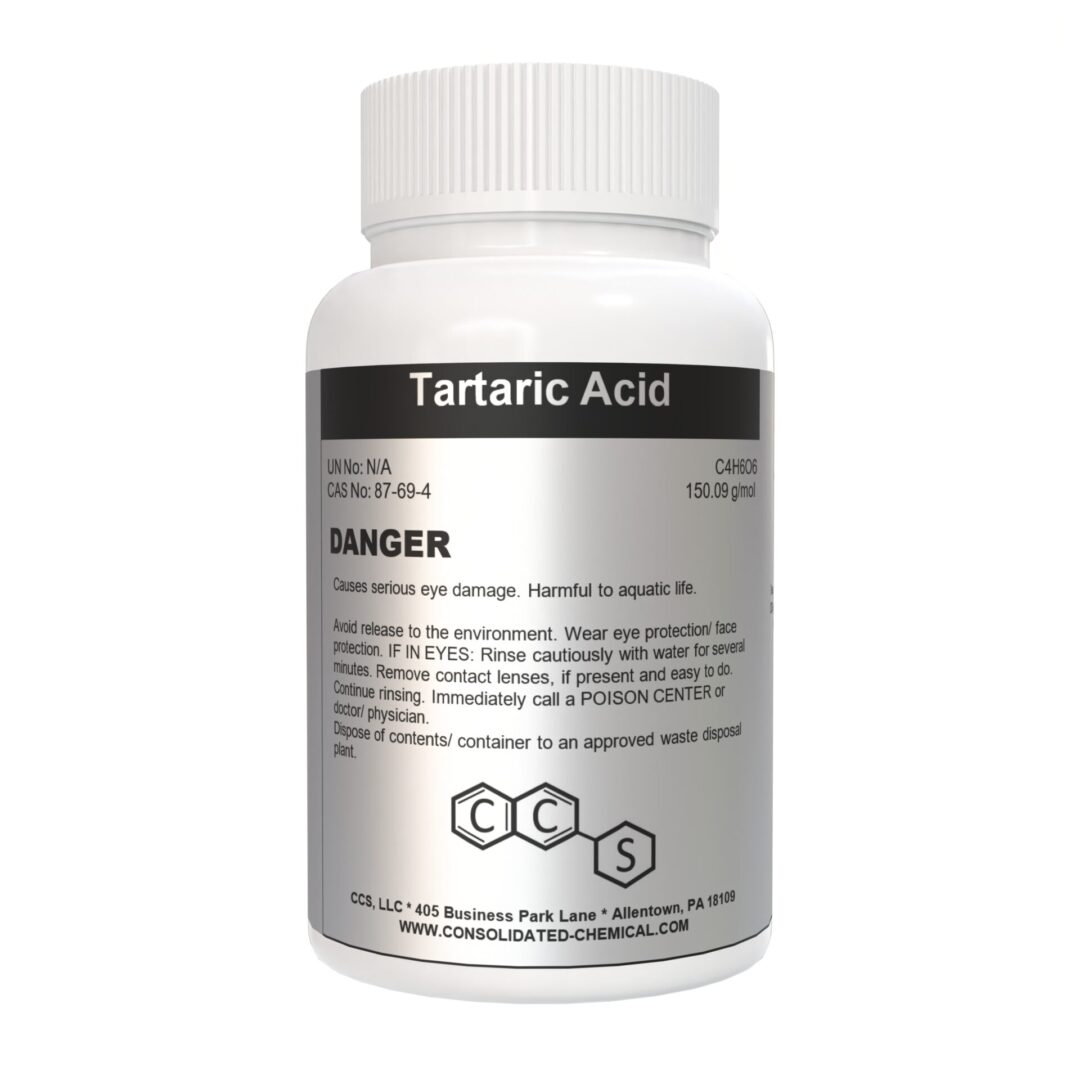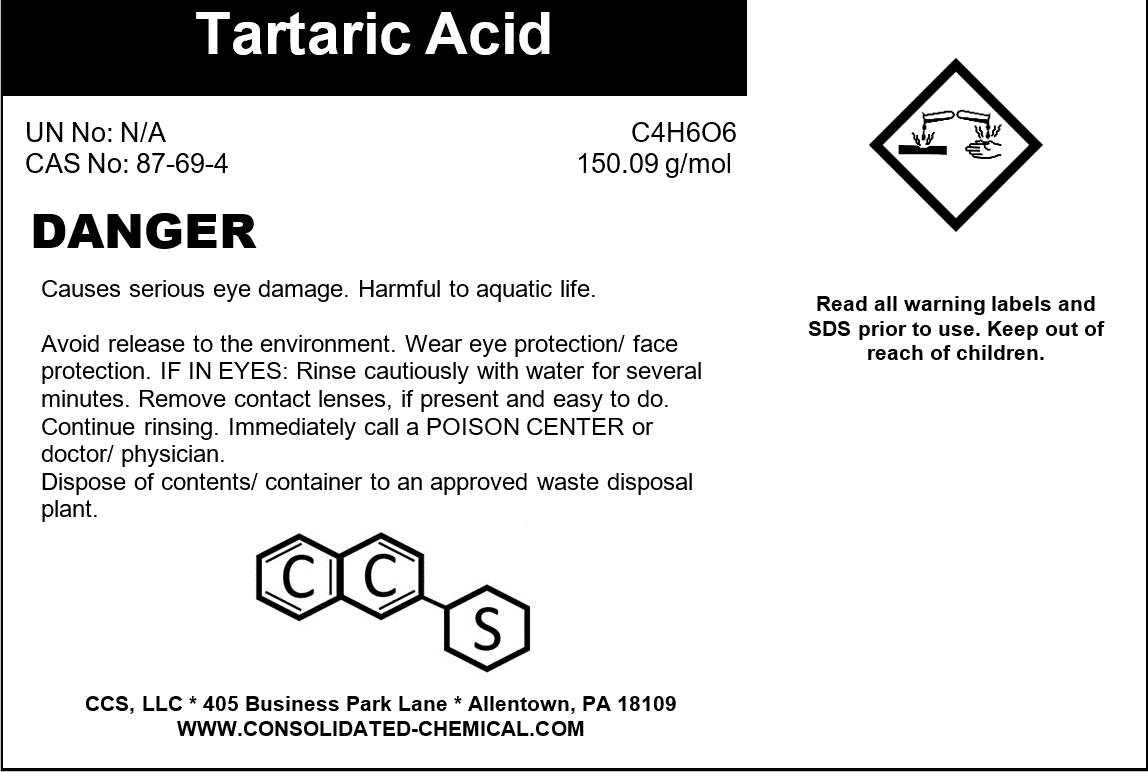Tartaric Acid | High-Purity Crystalline Powder | Food Grade
$19.99 – $28.00
Chemical Information
- Chemical Name: Tartaric Acid
- CAS Number: 87-69-4
- Molecular Formula: C₄H₆O₆
- Molecular Weight: 150.09 g/mol
- Appearance: White, crystalline powder
- Odor: Odorless
- Purity: ≥ 99.5%
Physical & Chemical Properties
- Melting Point: 168 – 170°C
- Density: 1.76 g/cm³
- Solubility: Soluble in water, ethanol, and methanol
- Viscosity: Low viscosity in aqueous solutions
- pH (1% solution): 2.0 – 3.0
- Biodegradability: Readily biodegradable
Mechanical & Stability Properties
- Combustibility: Non-combustible
- Flash Point: Not applicable
- Refractive Index: N/A
- Tensile Strength: Not applicable
Description
Tartaric Acid (C₄H₆O₆) is a naturally occurring organic acid found in various plants, particularly grapes, tamarinds, and bananas. It is widely used in the food and beverage industry as an acidulant and antioxidant, in the pharmaceutical sector for effervescent tablets, and in industrial applications such as ceramics, textile printing, and electroplating. This high-purity tartaric acid is available in food-grade, pharmaceutical-grade, and industrial-grade variants, ensuring suitability for a broad range of applications.
Applications of Tartaric Acid
1. Food & Beverage Industry
- Acidulant & Preservative: Enhances sourness and extends shelf life.
- Baking Applications: Key ingredient in cream of tartar for stabilizing egg whites.
- Beverage Industry: Used in winemaking to regulate acidity and improve taste.
- Confectionery & Jams: Prevents sugar crystallization in candies and jams.
2. Pharmaceutical Industry
- Effervescent Tablets: Used in combination with bicarbonates for fizzing formulations.
- Drug Synthesis: Intermediate in pharmaceutical manufacturing.
- Medical Research: Utilized in biochemical and medicinal studies.
3. Industrial & Manufacturing Applications
- Electroplating & Metal Cleaning: Helps remove oxide layers from metals.
- Ceramics & Textile Printing: Used as a dispersing agent and stabilizer.
- Construction & Cement Retardant: Enhances setting time in gypsum and cement.
4. Agriculture & Animal Feed
- Soil Conditioning: Improves soil pH balance and microbial activity.
- Animal Feed Additive: Used to enhance palatability and digestion in livestock.
Storage
- Store in a cool, dry, and well-ventilated area away from heat and moisture.
- Keep in airtight, sealed containers to prevent exposure to humidity and air, which can lead to degradation.
- Avoid storage near alkalis, oxidizing agents, or moisture-sensitive materials.
- Recommended storage temperature: Below 25°C (77°F).
- Protect from direct sunlight and extreme temperature fluctuations.
Handling
- Use protective gloves, safety goggles, and a dust mask when handling to avoid irritation.
- Avoid direct contact with skin and eyes; in case of contact, rinse thoroughly with water.
- Prevent the formation of dust clouds, as excessive inhalation of fine powder may cause respiratory irritation.
- Use in a well-ventilated area or under a fume hood for industrial handling.
Safety
- Non-toxic, but prolonged exposure may cause mild skin, eye, or respiratory irritation.
- If ingested in large quantities, seek medical attention immediately.
- Follow standard industrial hygiene practices: wash hands thoroughly after handling.
- Dispose of waste according to local environmental regulations.
Additional information
| Size | 500 Grams (1.1 Lbs), 1000 Grams (2.2 Lbs) |
|---|
Related products
-
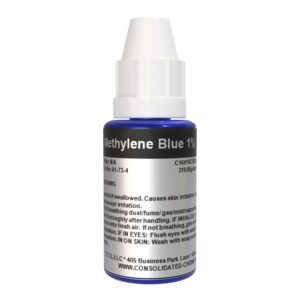
Methylene Blue 1% Aqueous Stain/dye Solution
$12.00 Select options This product has multiple variants. The options may be chosen on the product page -
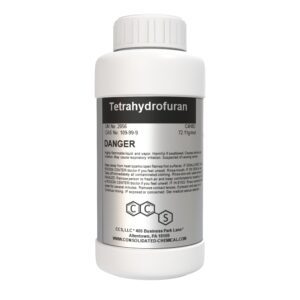
Tetrahydrofuran (THF) – Premium High Purity Solvent
$18.00 – $600.00 Select options This product has multiple variants. The options may be chosen on the product page -
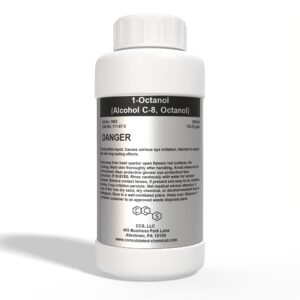
1-Octanol (Alcohol C-8) Premium Aroma Fragrance Compound
$12.00 – $95.00 Select options This product has multiple variants. The options may be chosen on the product page -
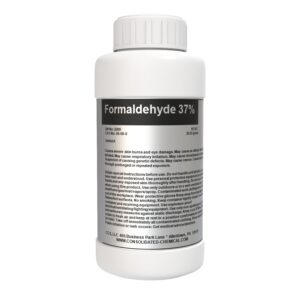
Formaldehyde 37% Solution (Methanal) – Lab Grade
$23.99 – $320.00 Select options This product has multiple variants. The options may be chosen on the product page
SKU: N/A
Categories: Flavoring Agent, Food Additive, Industrial Chemical
Tags: Acid Catalyst, Acidic pH Modifier, Acidifier, acidity regulator, Acidulant, Acidulant for Beverages, Acidulant for Food, Agriculture Additive, Animal Feed Supplement, Antioxidant, Baking Additive, Baking Industry Acid, Best Price Tartaric Acid, Beverage pH Control, Biochemical Reagent, Biodegradable Acid, BP-Grade Tartaric Acid, Bulk Tartaric Acid, Bulk Tartaric Acid for Sale, Buy Tartaric Acid, Cement Retardant, Ceramic Dispersant, Chelating Agent, Chemical Reagent, Citric Acid Alternative, Cleaning Agent, Concrete Additive, Confectionery Stabilizer, Cosmetic Ingredient, Cream of Tartar Source, Crystalline Tartaric Acid, Dietary Acid, Eco-Friendly Acid, Effervescent Drug Formulation, Effervescent Tablet Ingredient, Electroplating Chemical, Emulsification Agent, emulsifier, Fast Shipping Tartaric Acid, FCC-Grade Tartaric Acid, Fermentation Acid, Food Preservative, Food Processing Ingredient, Food-Grade Tartaric Acid, Global Supplier of Tartaric Acid, Gypsum Retarder, High-Purity Tartaric Acid, Industrial Tartaric Acid, Laboratory-Grade Tartaric Acid, Manufacturer-Direct Tartaric Acid, Medical-Grade Tartaric Acid, Metal Cleaning Agent, Natural flavoring compound, Natural Organic Acid, Natural Tartaric Acid, Nutritional Supplement, Organic Acid, Organic pH Adjuster, Personal Care Acid, pH Regulator, pharmaceutical excipient, Pharmaceutical Tartaric Acid, Preservative, Research-Grade Tartaric Acid, Skincare pH Adjuster, Soil Conditioner, Solvent Additive, Sour Flavor Enhancer, Specialty chemical, Specialty Ingredient for Food, Surfactant, Sustainable Acidulant, Sustainable Chemical Supply, Sustainable Tartaric Acid Supplier, Tart Flavor Compound, Tartaric Acid, Tartaric Acid Powder, Tartness Enhancer, Textile Printing Additive, USP-Grade Tartaric Acid, Wholesale Tartaric Acid, Wine Additive, Wine Fermentation Agent, Winemaking Acid, Winemaking Additive

